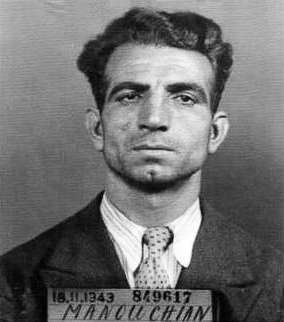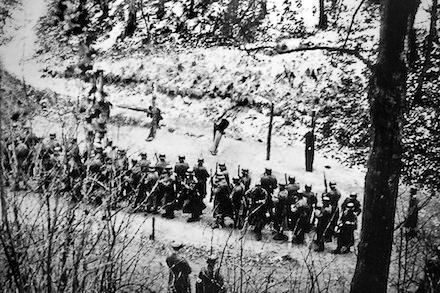Monsieur Rémi Babinet purchased the beautiful building at 85-87, rue du Faubourg Saint-Martin in the former working-class neighborhood of Paris’s 10thdistrict. M. Babinet’s intent was to restore the abandoned late 19th-century building and move his advertising business there. Shortly afterwards, a historian approached him in the spring of 2009 with the news that M. Babinet’s building was used as a Nazi forced labor camp.

Babinet learned that his building had been confiscated by the Nazis and by 1943, it had become a giant distribution center and retail store for Nazi officers to shop in. The inventory was involuntarily supplied by Parisians who happened to be Jewish. The forced labor were Jews who had been arrested and detained at Drancy. Rather than being deported immediately to Auschwitz, they were transferred to Nazi department stores in Paris to work as clerks, laborers, and skilled craftsmen.

Did You Know?
Did you know that the Mousquetaires de la garde or, Musketeers of the Guard were the personal bodyguards of King Louis XIII? Alexander Dumas wrote the classic, The Three Musketeers, based loosely on the king’s guards (I suppose today, we would classify his book as “historical fiction”). This branch of the French military has essentially existed over many centuries albeit with different names but similar purposes. Today, its contemporary successor is The Republican Guard. This unit provides guards of honor for the State as well as security around Paris. Back in Napoléon’s day, his personal bodyguards were known as the Garde Impériale or, Imperial Guard (if I recall properly, didn’t President Richard Nixon try to do this in the early 1970s?).
The Imperial Guard was an elite group under the direct control of Napoléon. He carefully chose its members whom he expected to not only protect him but provide an elite fighting force during his battles. The “Old Guard,” as he called a select group of soldiers within the Imperial Guard, were the most seasoned soldiers in the French army, above-average height, and hardened veterans of battle campaigns. Only once did the Old Guard retreat without orders: the battle of Waterloo in 1814. After Napoléon was sent off to his final exile, the Old Guard disbanded. With the restoration of the Bourbon monarchy, the Imperial Guard would morph into a different existence and name. Here are some interesting facts about the Old Guard:
*This unit was with Napoléon from start (1799) to finish (1814).
*Soldiers were required to be a minimum of six feet tall. Napoléon was 5’5” and while standing next to his bodyguards, he developed a reputation for being short when in fact, he wasn’t (at least compared to the average male height of 5’2”).
*The soldiers were the best dressed in the French military.
* They were the best paid and enjoyed superior grades to other soldiers of equal rank.
*Imperial Guard soldiers were given R*E*S*P*E*C*T by all other military personnel. Even lowly privates were addressed as “Monsieur” by officers.
*They were allowed to complain.
* They lived in relative luxury and ate the best food (nothing but the best for the emperor’s boys).
*Napoléon called each of them by their first name.
*Some of surviving members of the Old Guard donned their former uniforms to attend the ceremony at the Hôtel des Invalides when Napoléon’s remains were returned to Paris in 1840.
Paris Department Stores
For those of you who “shop ‘til you drop,” you are likely familiar with the four major Paris department stores. Le Bon Marché (24, rue de Sèvres; 7e) was built in 1838. The Bazar de l’Hôtel de Ville (36, rue de la Verrerie; 4e) opened its doors in 1852. Printemps Haussmann (64, boulevard Haussmann; 9e) began operations in 1865 while Galeries Lafayette (40, boulevard Haussmann; 9e) started in 1894. Right from the beginning, these department stores catered to the upper-class citizens of Paris. A lesser known store (with little-known history) was started to address the needs of the “working class” citizens or laborers as they were known. Read More Nazi Plundering


